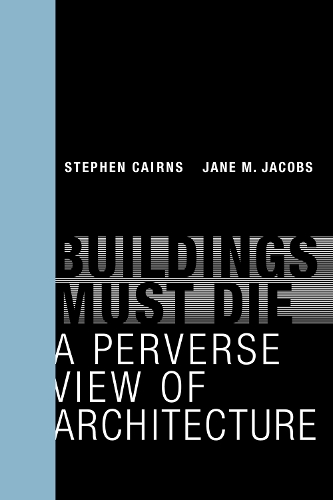
Buildings Must Die: A Perverse View of Architecture
(Paperback)
Publishing Details
Buildings Must Die: A Perverse View of Architecture
By (Author) Stephen Cairns
By (author) Jane M. Jacobs
MIT Press Ltd
MIT Press
11th August 2017
United States
Classifications
Professional and Scholarly
Non Fiction
Theory of architecture
721
Physical Properties
Paperback
312
Width 152mm, Height 229mm, Spine 24mm
Description
Part memento mori for architecture, and part invocation to reimagine the design values that lay at the heart of its creative purpose.Buildings, although inanimate, are often assumed to have "life." And the architect, through the act of design, is assumed to be their conceiver and creator. But what of the "death" of buildings What of the decay, deterioration, and destruction to which they are inevitably subject And what might such endings mean for architecture's sense of itself In Buildings Must Die, Stephen Cairns and Jane Jacobs look awry at core architectural concerns. They examine spalling concrete and creeping rust, contemplate ruins old and new, and pick through the rubble of earthquake-shattered churches, imploded housing projects, and demolished Brutalist office buildings. Their investigation of the death of buildings reorders architectural notions of creativity, reshapes architecture's preoccupation with good form, loosens its vanities of durability, and expands its sense of value. It does so not to kill off architecture as we know it, but to rethink its agency and its capacity to make worlds differently. Cairns and Jacobs offer an original contemplation of architecture that draws on theories of waste and value. Their richly illustrated case studies of building "deaths" include the planned and the unintended, the lamented and the celebrated. They take us from Moline to Christchurch, from London to Bangkok, from Tokyo to Paris. And they feature the work of such architects as Eero Saarinen, Carlo Scarpa, Cedric Price, Arata Isozaki, Rem Koolhaas and Fran ois Roche. Buildings Must Die is both a memento mori for architecture and a call to to reimagine the design values that lay at the heart of its creative purpose.
Reviews
Imagine a book on world leaders that looks at how they died, rather than their accomplishments, for an explanation of why the book's subtitle acknowledges that this perspective is 'perverse'. Despite and perhaps even because of these quirks, Buildings Must Die has the freshness of a project that takes a field and turns it on its heador, perhaps, blows it up.
* Times Higher Education *Author Bio
Stephen Cairns is Programme Director of the Future Cities Laboratory at the Singapore-ETH Centre. Jane M. Jacobs is Director of the Division of Social Sciencesand Professor of Urban Studies at Yale-NUS College, Singapore.
